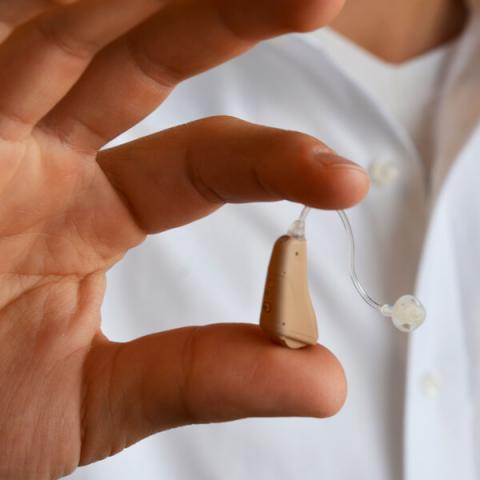
For the generation of Americans over the age of 50, the general feeling regarding hearing aids has traditionally been associated with cost. Although technology has gotten better and quality has improved, most people still feel that hearing aids are way too expensive and in many cases unaffordable. In fact, many people over the years have chosen to not address their hearing loss due to the elevated price of hearing aids. These traditional beliefs have led many to conclude that quality, inexpensive hearing aids simply do not exist. At Advanced Affordable Hearing we feel that this is not only unfair and unnecessary, but is quite simply untrue and with each happy customer we are breaking the tradition of expensive hearing aids one customer at a time.
A common question often asked is – “Since the cost of computing power has steadily declined in most of the electronic devices used in daily life, why aren’t hearing aids getting less expensive?” The answer is that they actually are, however due to misperception and lack of knowledge, those who truly need hearing assistance devices are often led astray. So here is a closer look at the process and the choices that people with hearing loss have today.
Let’s start with the actual cost of the electronics package used in today’s digital hearing aids. In truth, it is but a small part of the price that a consumer sees. Even the most expensive, full-featured hearing aids cost the manufacturer less than $300 to produce. Some of the inexpensive ‘low-tech’ models made in China cost less than $10 including shipping! So plainly the hardware isn’t the reason that hearing aids cost so much. Research and development is expensive too, but it’s a small part compared to what tradition and marketing does to the price.
Hearing aid manufacturers are the first to add marketing costs, then the wholesalers, and finally the retailers get their turns marking up products that have already been sold for profit twice. It’s now commonplace to hear dispensers asking $6000 - $8,000 per pair for high-end hearing aids. Where hearing aids differ from other wearable electronics is that they’ve been around much, much longer - centuries more in fact, not just decades. Although the problems hearing impaired people encounter remain the same as they were a century ago, the devices sold to help the hard of hearing have improved a great deal. However, due to the disappointing experiences many people have had with rudimentary hearing aid technology in the past, a stigma of untrustworthiness still surrounds the hearing aid industry.
As digital technology came of age, it not only transformed hearing aid technology, it also forever changed how hearing aids are sold, giving the astute buyer a means of breaking from the traditional method of being limited to the prices offered by a few local hearing aid dispensers. Hearing-impaired people can now learn about and shop for hearing aids from the comfort of home.
Here are the three main methods of buying a hearing aid that affect cost:
- Least Expensive – Online purchase, shipped direct to the customer. This category means a ‘self-service’ buying experience, and offers the largest range of price selection by far. Older technology in a hearing aid produced in China is commonly priced between $50 and $300 USD retail. Name brand hearing aids with the lasted technology are also available at a huge savings, but require more participation from the consumer. Since these hearing aids require being set for the wearer’s individual hearing loss, the consumer will need to have his or her hearing tested to obtain an audiogram locally. The online provider then sets the hearing aid to the supplied audiogram and shipped to the customer ready to wear.
- More Expensive - Online purchase, bundled with some amount of face-to-face service with a participating local dispenser. A hybrid of the methods described above and below, this method is designed to limit the amount or length of service bundled with the hearing aid purchase.
- Most expensive - Local dispenser purchase – This category includes both the best, and worst, of purchasing hearing aids. Best, because of the personal service the customer receives. Worst, because of the personal service the customer pays for and does not receive.
Since all hearing aid sales are regulated by state and federal regulations, hearing aids are sold with a mandated money-back period. Dispensing audiologists and licensed hearing aid dispensers know any services they provide during the money-back period must be provided free or the hearing aids will be returned. Furthermore, a lengthy history of selling hearing aids indicates all in-office service had better be free in order to develop repeat customers. In this case, free service is really bundled service; and most of it goes unused.
Today’s world of ever expanding resources that are accessible on the Internet means hearing-impaired people, on almost any budget, can afford hearing aids for the first time in human history. Most health insurance plans, even Medicare, pay for the hearing test so the first step is free, but it’s up to you to take it. Learn about your hearing loss, and the methods for purchasing hearing aids that will help break the tradition of high cost of hearing aids.
